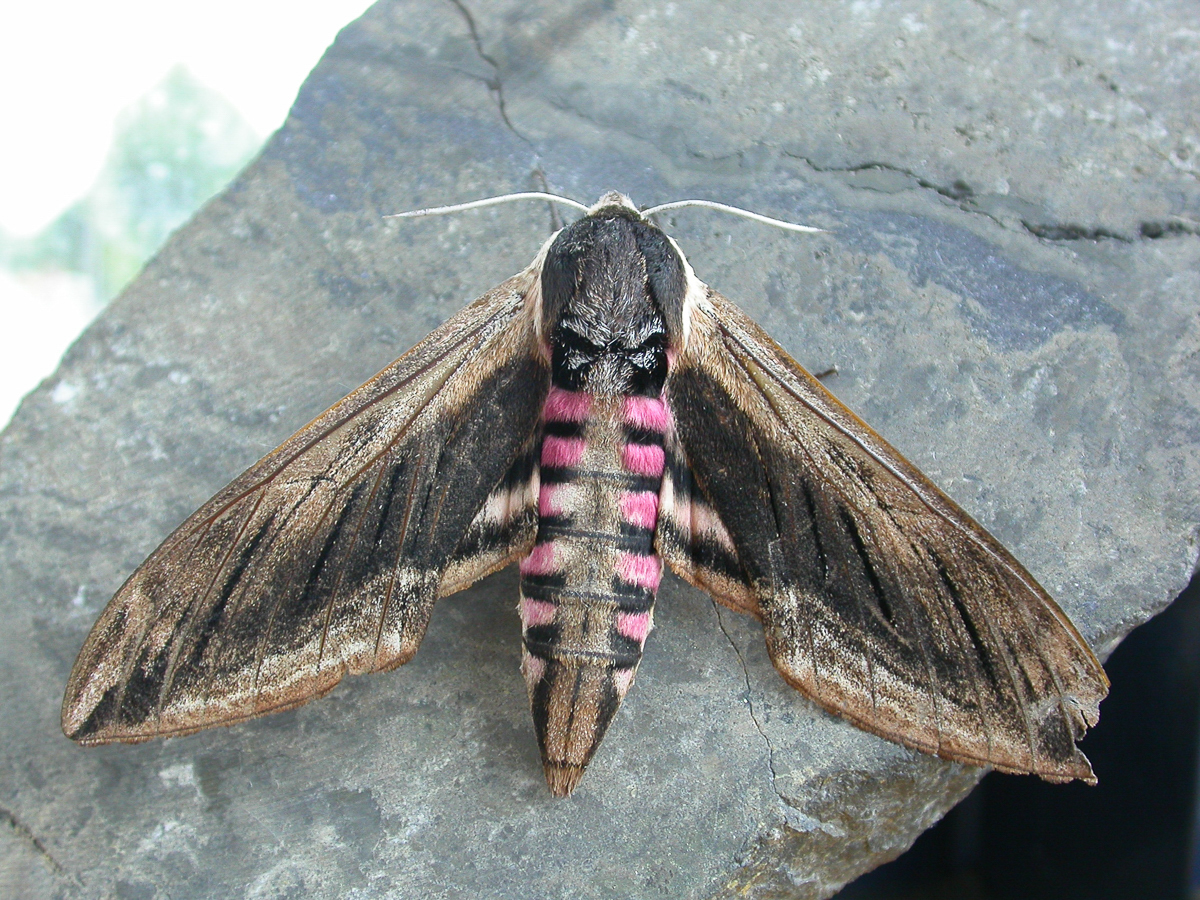
Photo © Andy Mitchell
Sphinx ligustri, the privet hawk moth, is a moth found in most of the Palearctic realm. The species was first described by Carl Linnaeus in his 1758 10th edition of Systema Naturae.
It has a 12 centimetres (4.7 in) wingspan (generally deflexed at rest), and is found in urban areas, forests and woodlands.
The male privet hawk moth can make a hissing sound, if disturbed, by rubbing together a set of scales and spines at the end of its abdomen.
The larvae are usually found between July and August: and bury themselves in the earth when preparing to become a pupa. They then fly in the following June.
As its name describes, the caterpillars feed on privets, as well as ash trees, lilacs, jasmine, and a number of other plants.
Source: Wikipedia
The primary larval foodplants are Ash (Fraxinus excelsior), brideworts (Spiraea spp.), Butterfly-bush (Buddleja davidii), Dogwood (Cornus sanguinea), Forsythia (Forsythia x intermedia), Garden Privet (Ligustrum ovalifolium), Guelder-rose (Viburnum opulus), Holly (Ilex aquifolium), Holm Oak (Quercus ilex), Honeysuckle (Lonicera periclymenum), Hop (Humulus lupulus), jasmines (Jasminum spp.), Laurustinus (Viburnum tinus), Lilac (Syringa vulgaris), mock-privets (Phillyrea spp.), Rowan (Sorbus aucuparia), Snowberry (Symphoricarpos albus), teasels (Dipsacus spp.), Wayfaring-tree (Viburnum lantana) and Wild Privet (Ligustrum vulgare).